
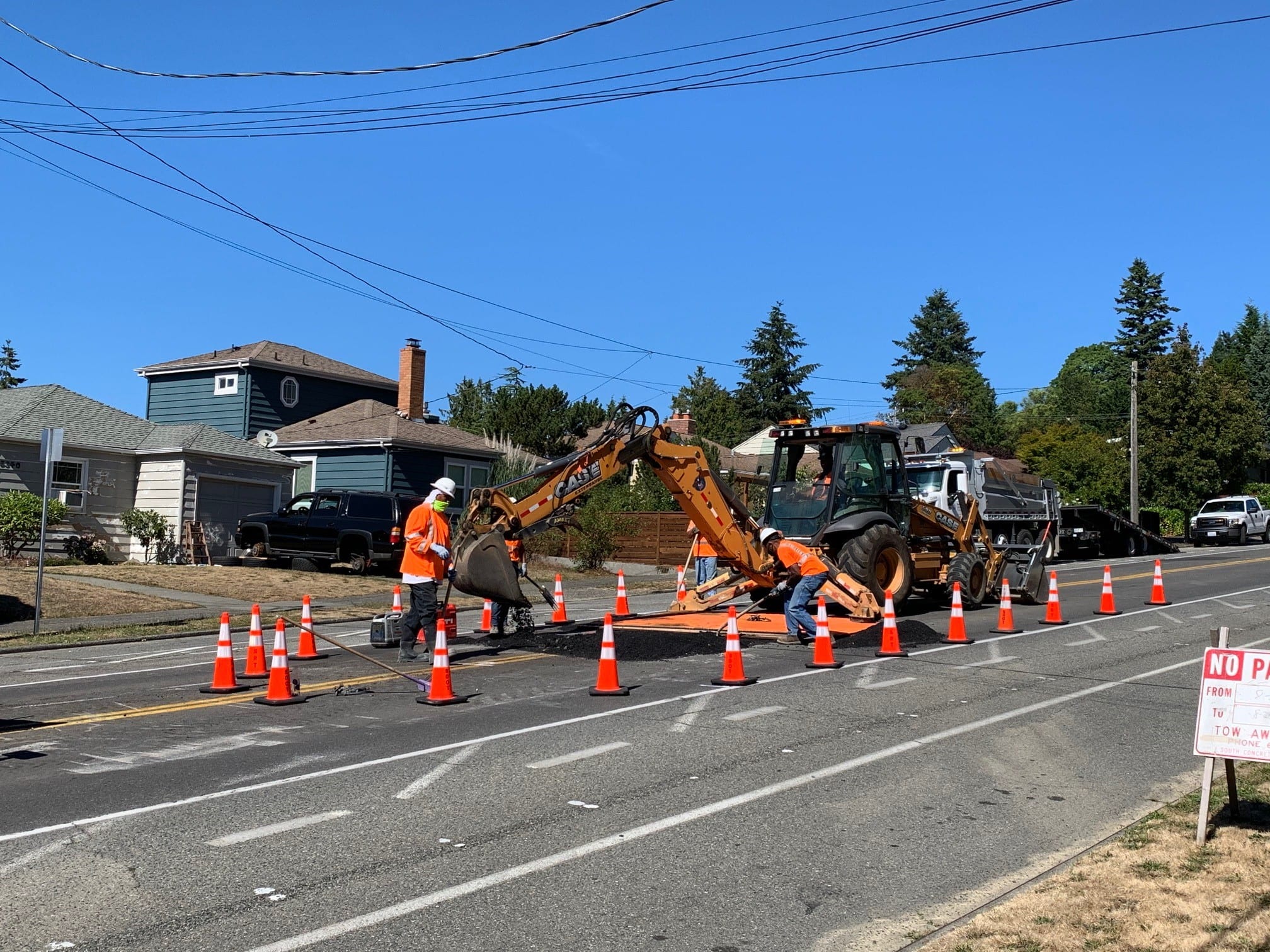
Throughout the many challenges created by the COVID-19 pandemic during the last six months, our dedicated staff have continued performing their jobs with a true commitment to excellence.
In honor of Labor Day, we’re giving a shout out to a few of the many people who make it possible for SDOT to fulfill our commitments, advance our projects, and do essential transportation-related work for City of Seattle residents every day.
Since 1894, the national Labor Day holiday has commemorated workers’ contributions to the strength, prosperity, and well-being of our country. Celebrated on the first Monday of September, the holiday was originally created by the labor movement and is a yearly tribute “dedicated to the social and economic achievements of American workers” (U.S. Department of Labor).
This summer, we may not be marching in parades or congregating with large groups at beaches and parks in honor of laborers, but we can still capture the spirit of Labor Day by commemorating those who build and maintain the transportation infrastructure of Seattle. These essential workers consistently go above and beyond, collaborating with coworkers and serving others — throughout our department and across the city.
We’re pleased to present to you a few of these SDOT Labor Day heroes.
Meet Billy Britt, SDOT’s Senior Warehouser (OOC)
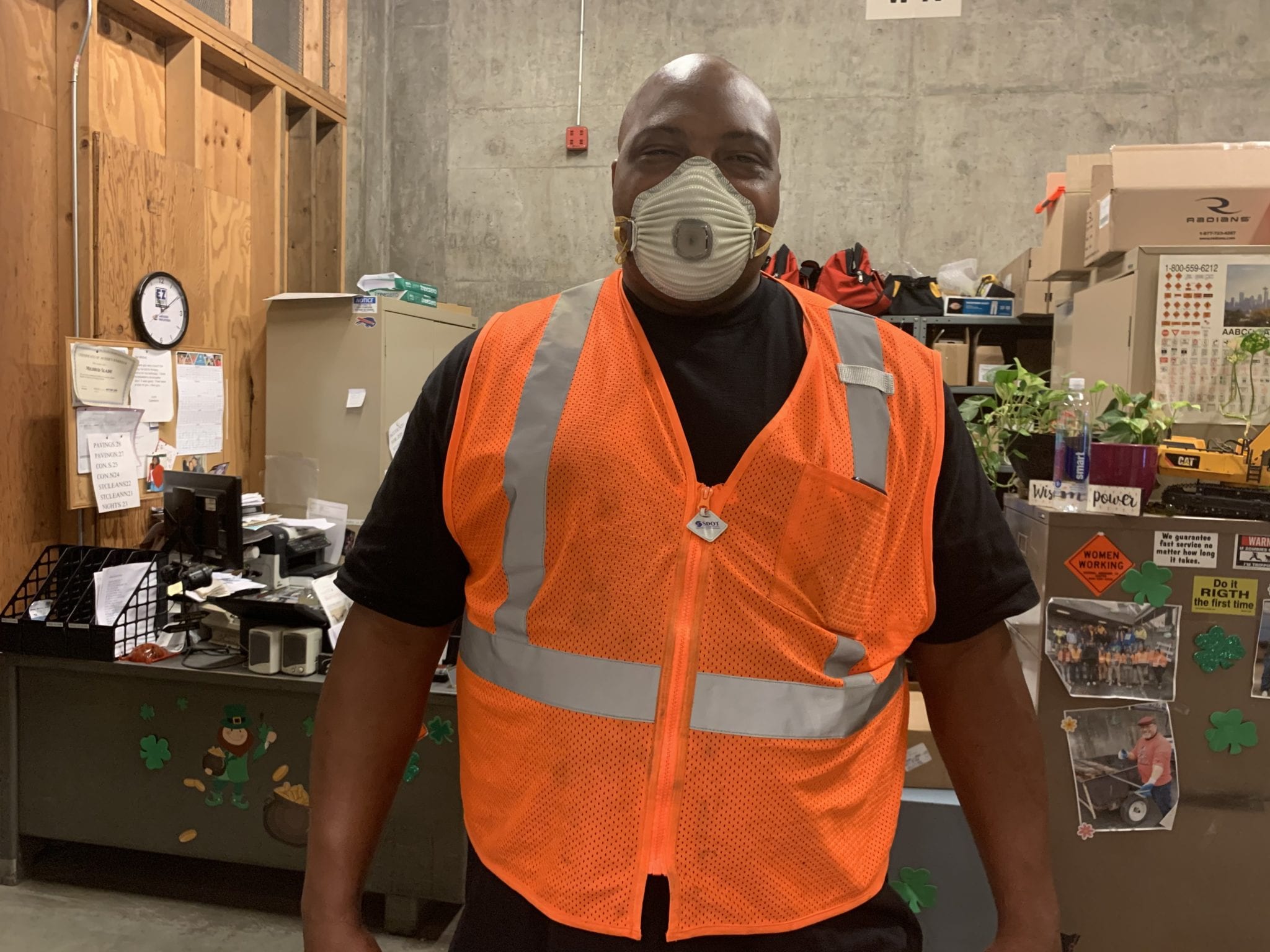
Billy Britt has worked at SDOT for six years and is now an Out-of-Class (OOC) Senior Warehouser, which means he is temporarily doing a job somebody else usually occupies. He ensures that our Maintenance Operations crews have the supplies they need to get their work done by distributing equipment out of SDOT’s Charles Street facility, where it’s stored when it’s not being used.
In addition to providing the necessary tools for everything from concrete work to gardening, Billy also distributes Personal Protective Equipment (PPE). This includes masks (three washable face coverings per person), N95 masks for specialized work that produces hazardous dust, and gallons of hand sanitizer. He explains that keeping people safe during the pandemic means:
“There’s a lot more stuff to distribute every day. But you can’t get mad at anybody for wanting too much hand sanitizer and wipes!”
Billy Britt
Despite the challenges created by the COVID-19 pandemic, Billy says his job is a lot of fun; “it’s interesting, and every day it’s something new.” He’s thriving with the added responsibilities of the OOC position and likes working hard and interacting with coworkers. He believes that it “beats staying at home, where there’s only so many work projects you can do.”
Billy is a lynchpin in the smooth functioning of our Maintenance & Operations Division, and his essential work enables the rest of our crew staff to get their jobs done.
Meet Cliserio “Pico” Bonilla, SDOT’s Senior Irrigation Specialist
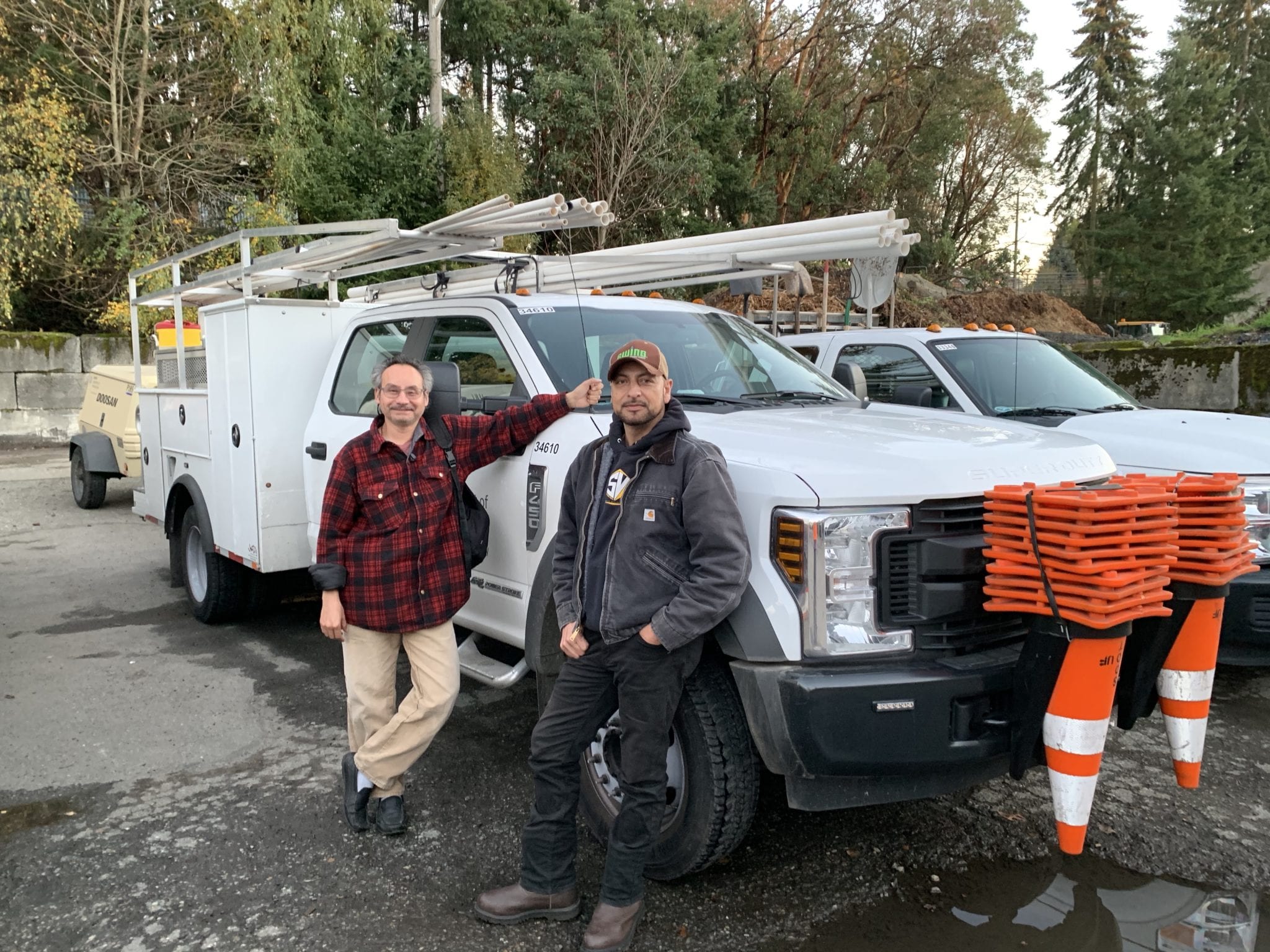
Pico has been working for SDOT since 1994 and launched his career here as a laborer on the landscape crew. He’s subsequently worked his way up to managing SDOT’s irrigation systems, which encompasses everything irrigation-related in the city right-of-way overseen by SDOT.
In addition to installing, maintaining, and repairing those systems, Pico also manages inventory and helps to develop new irrigation designs. He offers feedback on blueprints for large capital projects such as the Mercer Corridor, the Alaskan Way South Portal, and the Lander Street project. He’s passionate about his work and “feels lucky to have people who trust him.” He’s also grateful for the close partnership with his coworker, Jose Dominguez.
Pico grew up in the Mexican state of Nayarit and was a college student there, studying electromechanical engineering, when he spent a summer working in the fields in the U.S. with his brother. He intended to make money for tuition and resume his studies in Mexico, he explains, but then…
“I saw the most beautiful woman in my life, fell in love, and never went back.”
Pico Bonilla
The couple married in 1989 and are the parents of six children, one of whom works for SDOT Street Maintenance. His wife, Pico reports, is “every bit as beautiful today” as she was the day they met, and despite never finishing his studies, he’s been able to draw on his early engineering foundation to figure things out and adapt to new irrigation technologies.
Pico and Jose embrace the challenges of upgrading old irrigation systems to newer, more water-efficient ones. Pico presents ideas for upgrades to the city’s landscape architect and installs the new internet-controlled systems. So far this year they’ve upgraded eight systems; the modern technology enables them to monitor and control exactly how much water is used over time, resulting in significant cost savings for the city
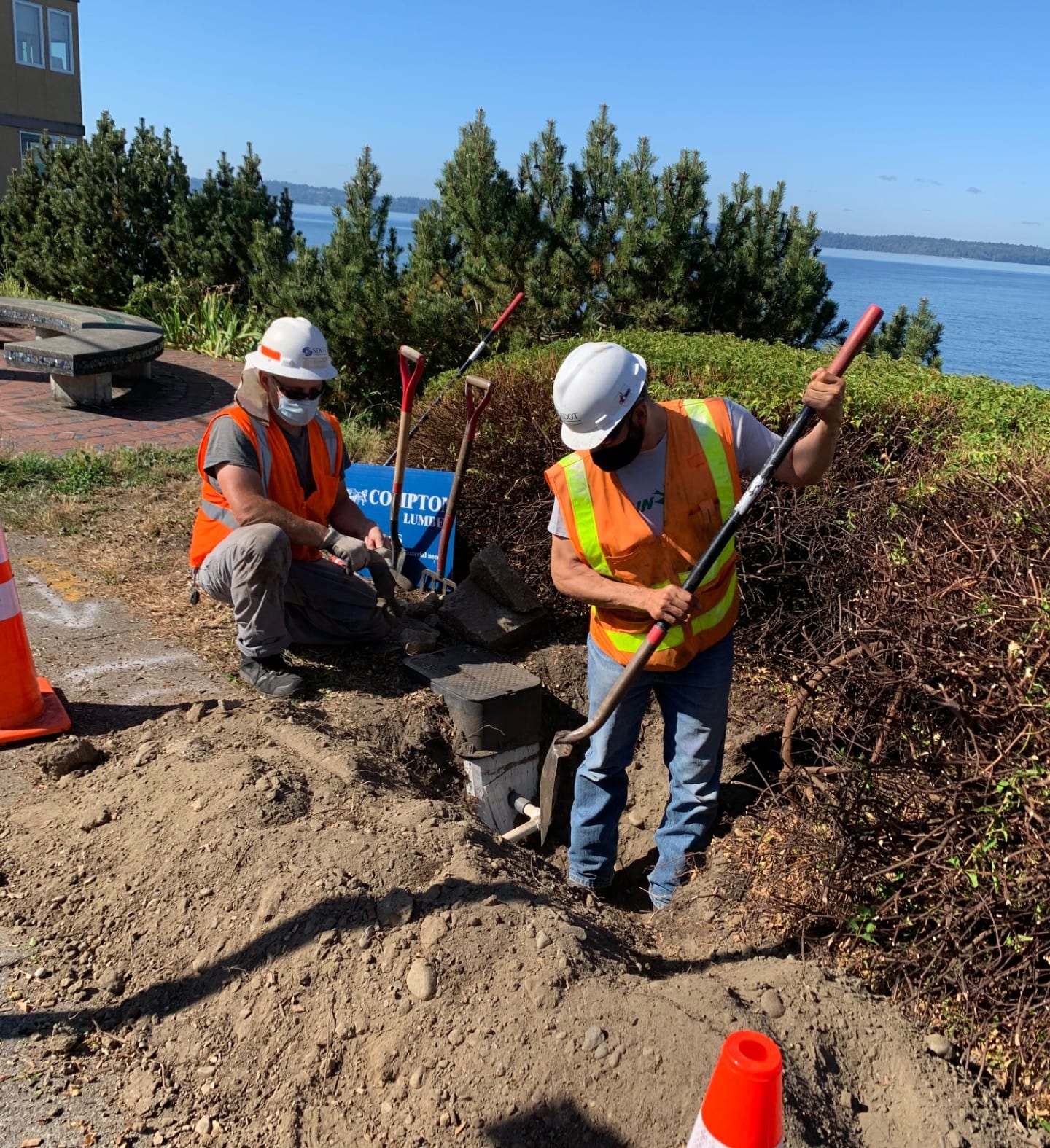
The challenges of Pico’s job have increased some with the pandemic, but he and Jose have adapted. He says working with a face covering can be difficult because “it’s hot and hard to breathe,” when they are digging or doing other physically demanding tasks. Their work has continued to be busy throughout spring and summer.
It’s especially important to preserve landscaping through the dry season, there are lots of road projects underway, and they take advantage of the good weather to install new irrigation systems. Every now and then Pico can work at home reviewing blueprints, but he notes “this isn’t really a desk job!”
Pico emphasizes that he loves his work and values the support he gets from his supervisor, Gary Hren, and Senior Landscape Architect Shane Dewald. He’s grateful for the professional growth opportunities the job has afforded and appreciates contributing to the beauty of Seattle’s public spaces.
Meet Patricia Westsik and Anthony Monroe, SDOT Response Team
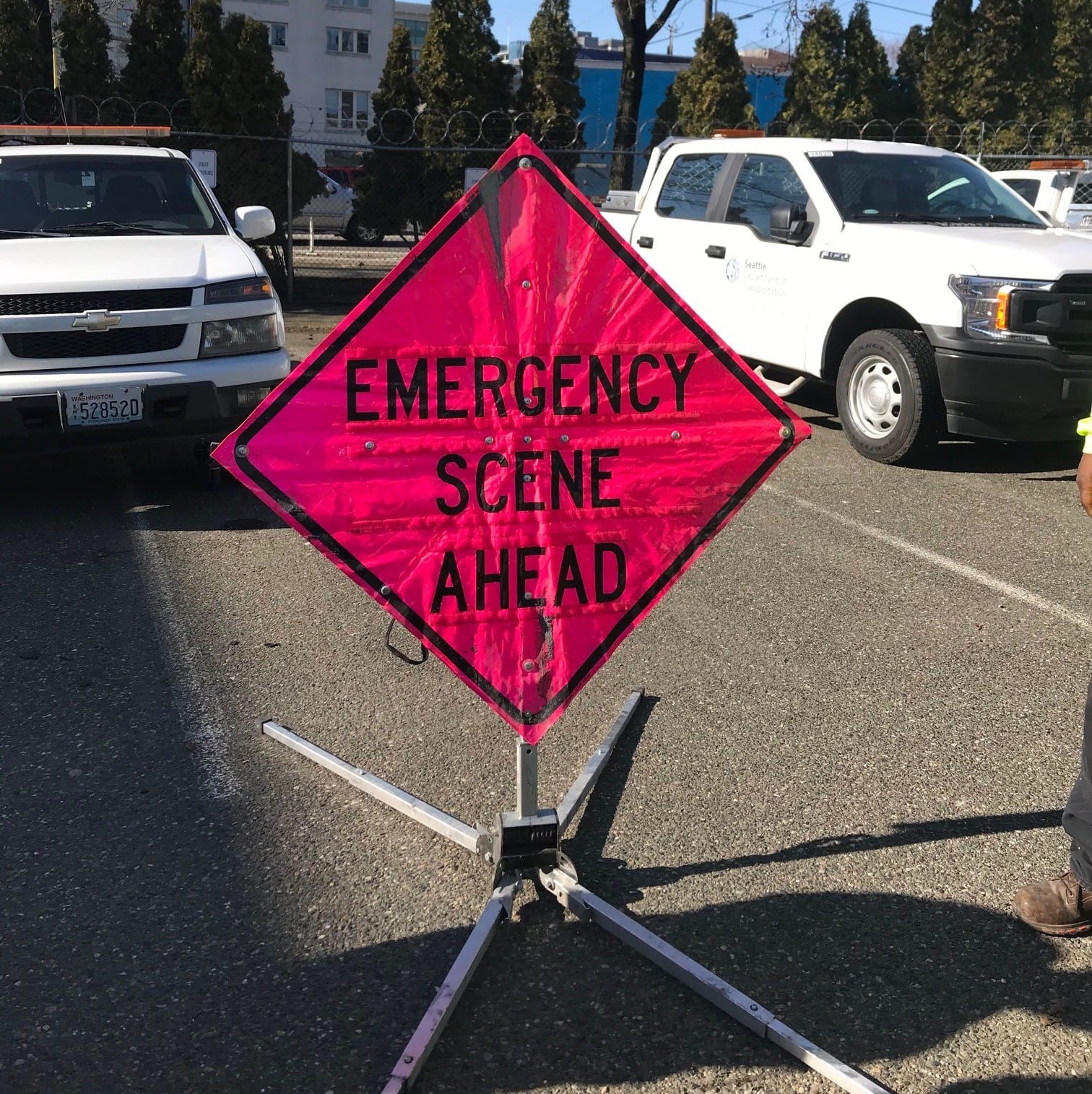
Patricia and Anthony are members of the SDOT Response Team (SRT); which means they are some of the first responders who keep the public safe by managing incidents on Seattle roads. They deal with all kinds of urgent situations, including crashes, hazardous waste spills, empty gas tanks, and medical emergencies.
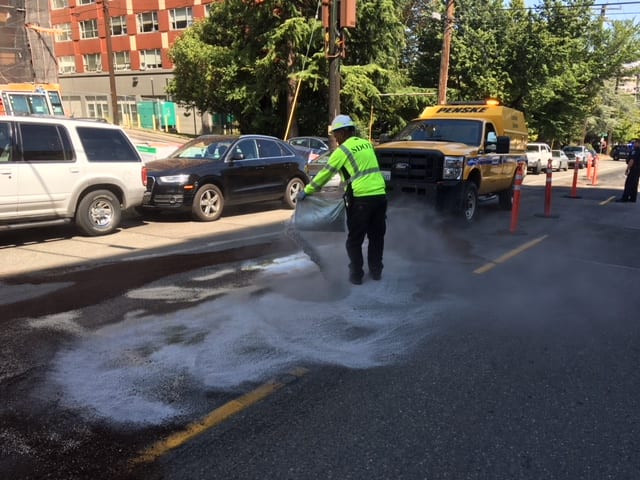
They responded to 7,172 incidents in 2019, and through August 23 of this year had responded to 3,803 calls. Among other tasks, they set up traffic controls like “Emergency Scene Ahead” signs and divert traffic with cones and barriers as needed. They also respond to rollovers and help move stranded cars and trucks off the road. They help people in need, prevent secondary collisions, and keep traffic moving.
Anthony Monroe, SDOT Response Team Emergency Laborer
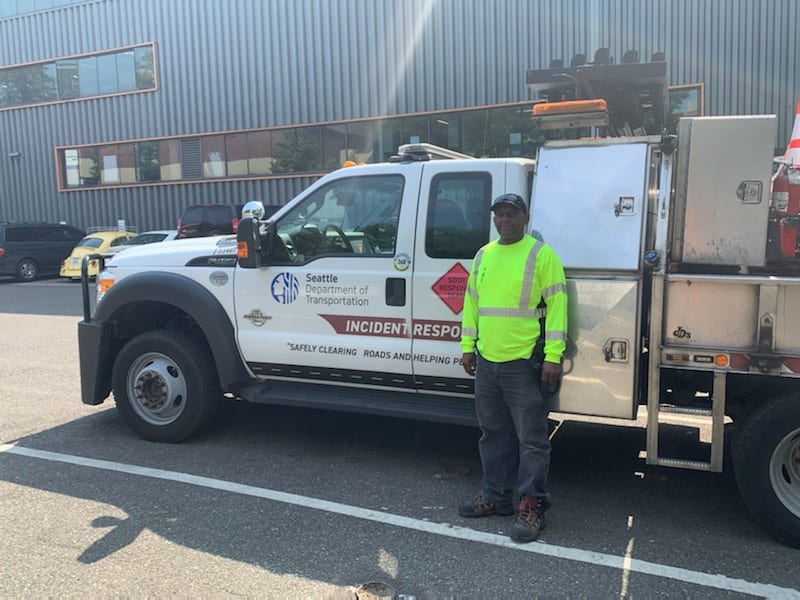
Anthony, who goes by the name “Monroe,” has been a member of SDOT’s Street Maintenance team for 26 years. He started as a laborer on the graveyard shift, transitioned to work as an emergency laborer, and is now a critical member of the SRT. He’s deeply committed to his job and to the people he helps on city streets. He’s only missed two days of work this year due to illness and takes pride in the determination and resilience that have kept him, and others on his team, going through the challenges of the COVID-19 pandemic.
During the initial phases of Governor Jay Inslee’s Stay Home, Stay Healthy order, the SRT team responded to significantly fewer incidents each day because there were simply “lots less people on the road.” Now, though, Monroe says that “as we start phasing up, it’s started to pick up. We’ve had a lot of everything. It’s still picking up every day. People are driving a lot faster and a lot crazier.” Preliminary data is confirming his on-the-ground experience: fewer cars on the roads has led to higher speeds and more serious collisions.
Monroe acknowledges that his job takes “a lot of stamina.” During each shift, SRT drivers patrol the streets and respond to calls for help, and, he says, “you never know what you’re going to find when you show up” at an incident scene. One day recently he responded to a call and the driver shouted at him to move away because she was sick.
Through it all, Monroe finds satisfaction in knowing that he’s helping the community. He’s grateful for the recognition the team receives from the public, explaining, “people send letters . . . The public really appreciates us.” All things considered, he says,
“This is the best job in the city. It’s always different. That’s what I love about the job. Helping people is satisfying.”
Anthony Monroe
Patricia Westsik, SDOT Response Team Supervisor
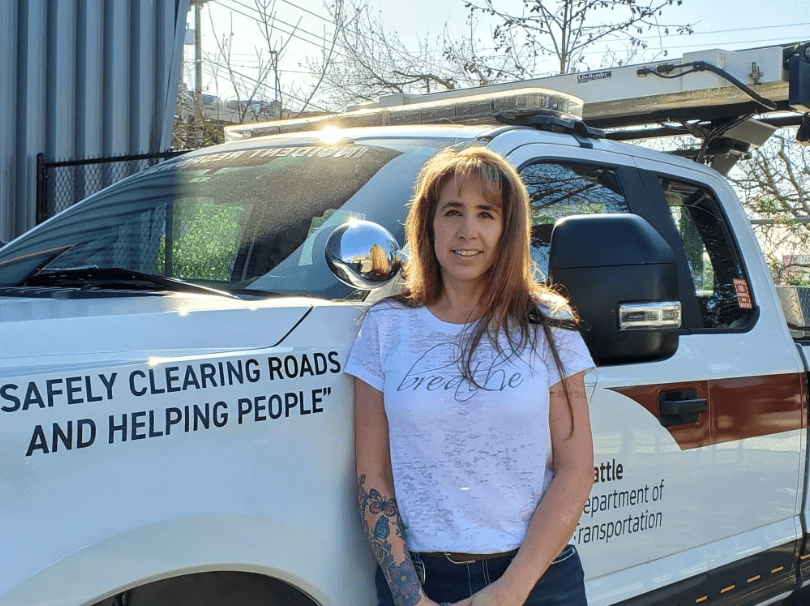
Patricia has supervised the SRT for nearly three years. She arrived with nine years of arterial incident response experience with Maricopa County, two years with the Arizona Department of Transportation working in the Traffic Operations Center, and 10 years as an Arizona State Trooper. She was featured in our blog last March and you can read more about her background here.
Monroe commends Patricia for transforming the SRT and professionalizing incident response at SDOT. “She’s a good boss,” he says. Among other things, Patricia has instilled an enhanced sense of responsibility in her team. “She has a very good work ethic, she’s disciplined and structured, and accountable and direct…. She’s made me love my job even more.”
As a boss and the only female member of the team, Patricia says, it’s important to support by showing up at incidents and pitching in to do “anything and everything” others are doing. They know they can count on her and they respect her skills and knowledge. And that respect is mutual, Patricia explains,
“I have a good group of guys; they are dedicated, and we’ve built respect among all of us.”
Patricia Westsik
That solid foundation enables this essential team to continue support Seattle drivers and make our roads safer 24 hours a day, seven days a week.
Meet Patrick Carter, SDOT Equipment Operator

Patrick joined SDOT a little over 15 years ago and worked his way up from utility laborer to heavy equipment operator. He’s worked on nearly every Maintenance & Operations Division team during his time here, including Street Maintenance, Asphalt Paving, Concrete Paving, and Bridge Maintenance. The broad experience he gained from this diverse work makes him a tremendously flexible and helpful member of our team.
Patrick has been in his current position for about four years. As a heavy equipment operator, he operates street sweepers (popularly known as “brooms”), loaders, tractors, backhoes, and excavators.
Street Maintenance entails all aspects of maintenance in SDOT-managed streets and the right-of-way. Patrick’s work varies by the season of the year. In autumn he’s on a street sweeper picking up leaves and helping to ensure that water going into our street drains isn’t contaminated by debris. During the winter he operates the equipment to fill salt bins and loads the trucks that treat icy and snowy roads. He also drives snowplow trucks as needed.
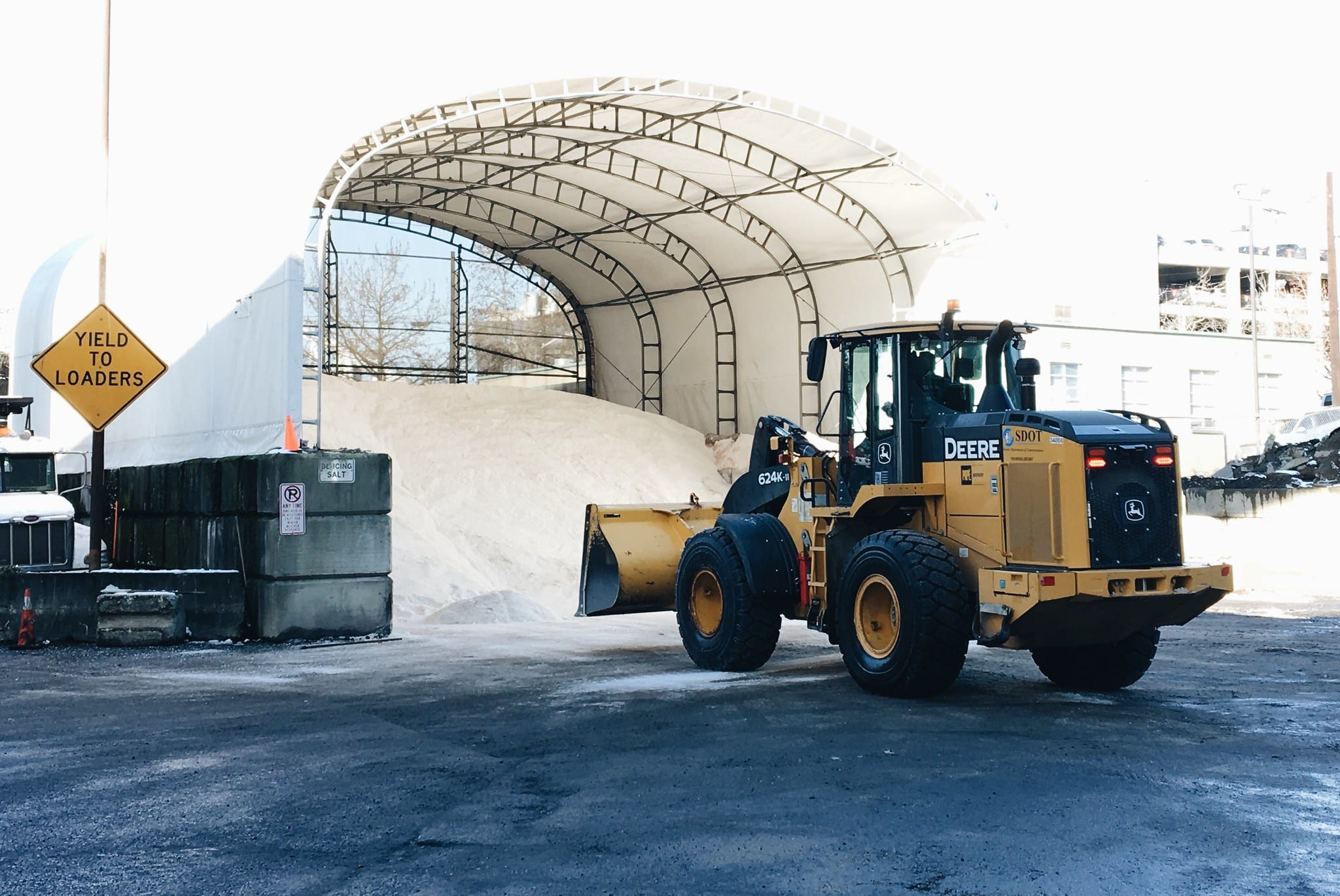
In spring and summer, Patrick cuts back blackberry bushes and trees that impinge on our roads and sidewalks. During the growing season, he says, “the vegetation starts to get out of hand!” He operates the tractors with mower attachments that cut and chew up vegetation. This maintenance schedule is highly organized to cover all areas of the city – he says he “goes from location to location on grid system” throughout the summer.
Patrick has earned his reputation as a helpful person who’s willing to pitch in where and when he’s needed.In addition to his scheduled duties, he supports other crews in filling potholes and remediating trip hazards, and he recently operated equipment for paving projects in South Seattle, the Central District, and West Seattle.
His work often involves collaboration with other City departments, too, especially Seattle Public Utilities (SPU) and the Seattle Parks Department which also manage vegetation in public spaces. “Sometimes,” he says, “I’ll help out SPU – I figure I’m here, I’ll just cut it [the vegetation] back.” This cooperative spirit builds productivity and cohesiveness across city departments.
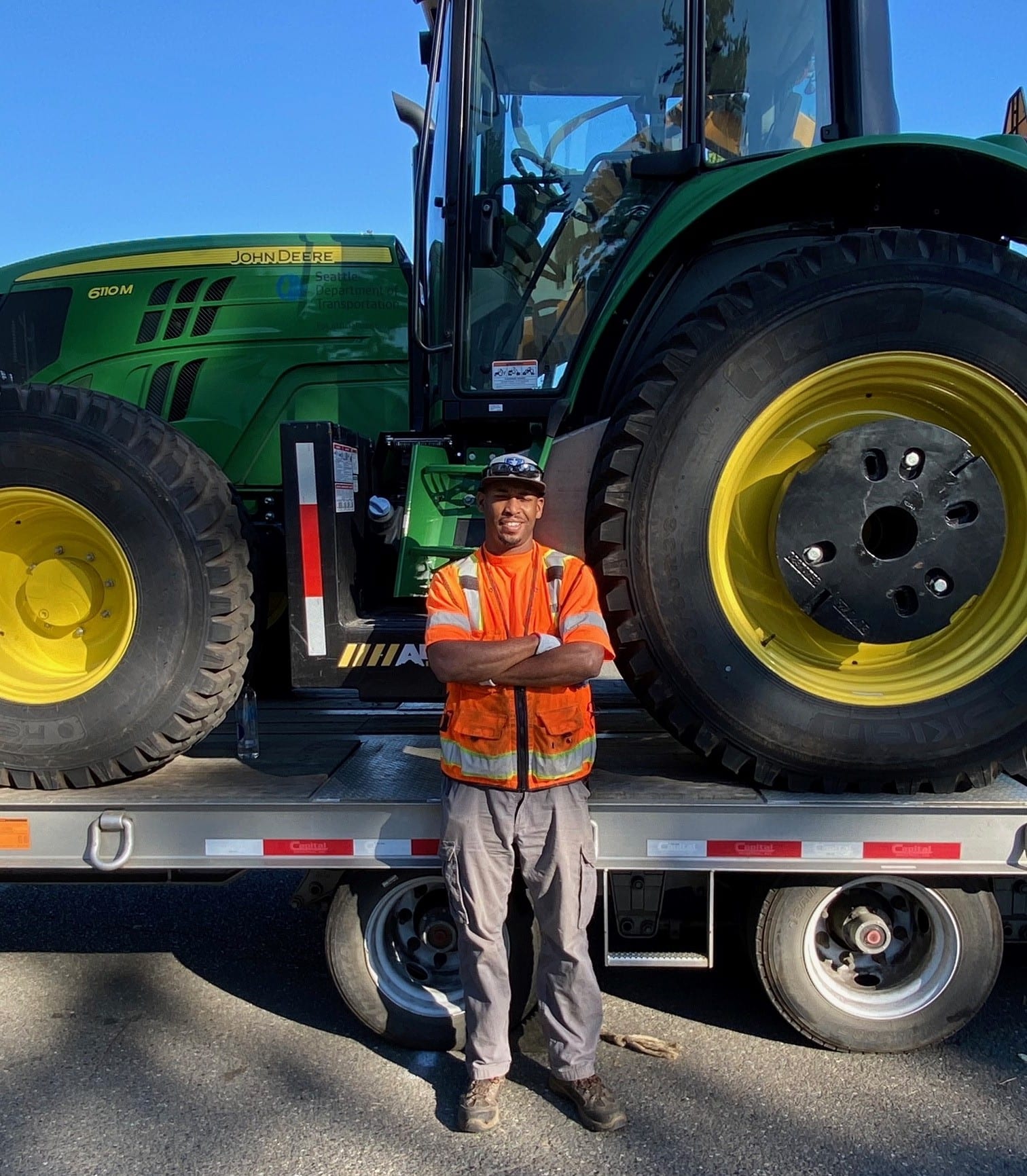
Patrick says that some aspects of his work have gotten more difficult during the pandemic, most notably the challenge of managing childcare and keeping his three children occupied when he’s home and his wife is working. They’re getting through it, but it’s stressful and he has trepidation about how they’ll manage the upcoming school year.
He notes, too, that with more people staying home and parking on the streets during the day, they have had to put “no parking” signs up to get anything done. “There are more obstacles when you’re operating machinery and I have to strategize on how I’m going to do the job three days ahead of time.”
Patrick’s morale is boosted by working with a good crew that is “well-knit and communicates well.” They’re versatile and back each other up. He is grateful for the opportunities he had to cross-train while he was advancing through the organization and happy to mentor others who are doing the same. He likes working with “loyal employees who appreciate their jobs and know how blessed we are to have a job like this.” He has a sense of larger purpose in his job, too.
“We know we are keeping the city alive and helping to support safety.”
Patrick Carter
Meet Missy Paulus, SDOT’s Asphalt Paving Manager and Equipment Pool (OOC)
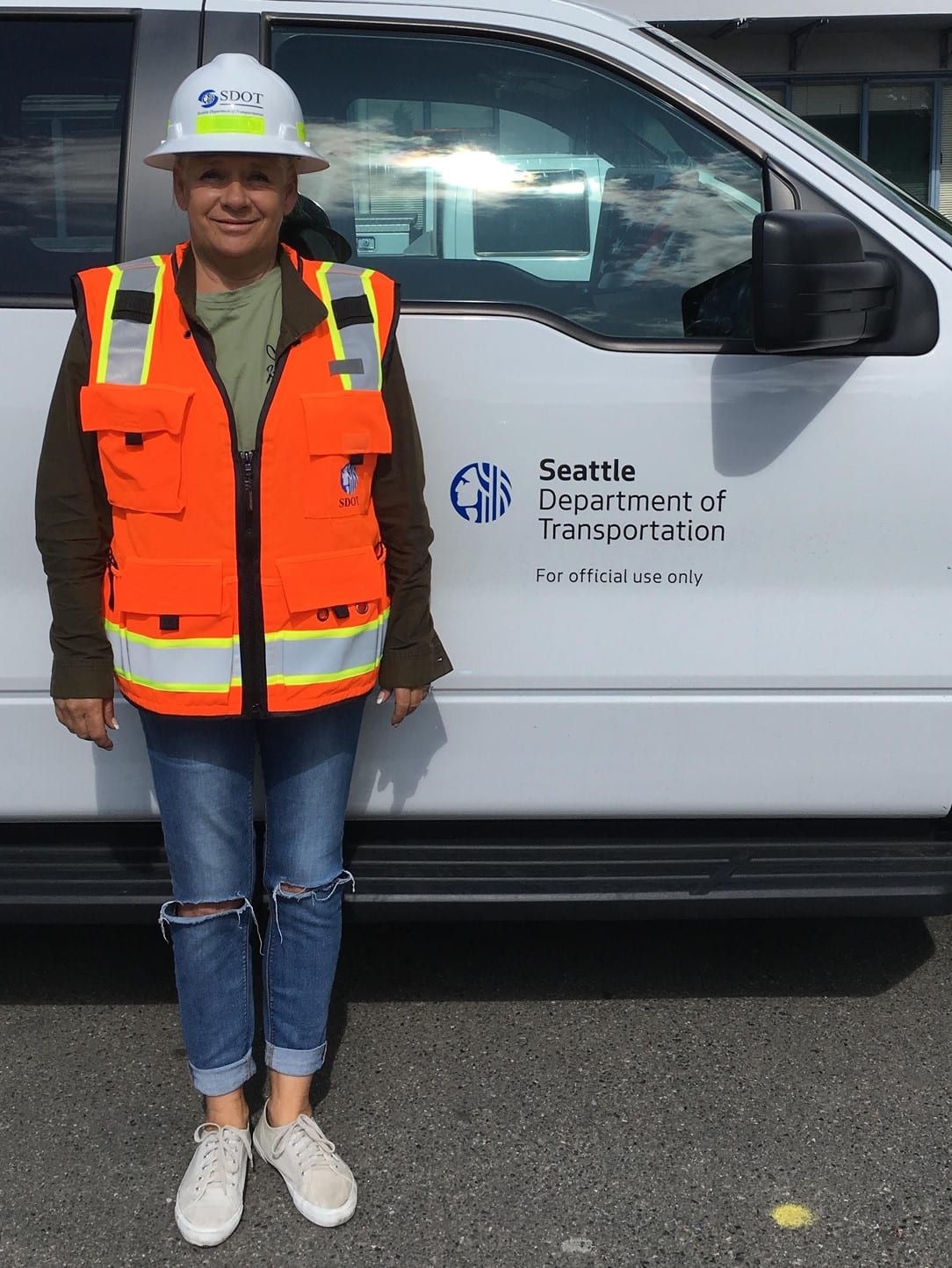
Missy began her 25-year career at SDOT as a laborer in asphalt paving and worked her way up to heavy equipment operator. From there she advanced to Asphalt Paving Crew Chief and has been, for the last year, managing the Asphalt Paving team and overseeing the equipment pool in a temporary Out of Class (OOC) assignment.
This means she manages all asphalt paving projects and oversees the daily schedule of heavy trucks and lowboys (semi-trailers) that haul out of our yards. Her optimism and can-do spirit permeate her work and relationships with others and make her a highly valued member of our team.
Missy has strategically pursued her goals throughout life. She has three brothers, including a twin, and grew up playing with trucks. She longed to operate heavy equipment from an early age and was determined to follow a career path that would help her realize that dream.
When she applied to be a laborer at SDOT, she was “one of the few women who could pass the strength and endurance test.” The first week on the asphalt crew, though, she almost gave up. She says she was too hot — asphalt is 360 degrees — and she found smell unbearable. “I said to myself, I will probably last a week. This stuff is gross.”
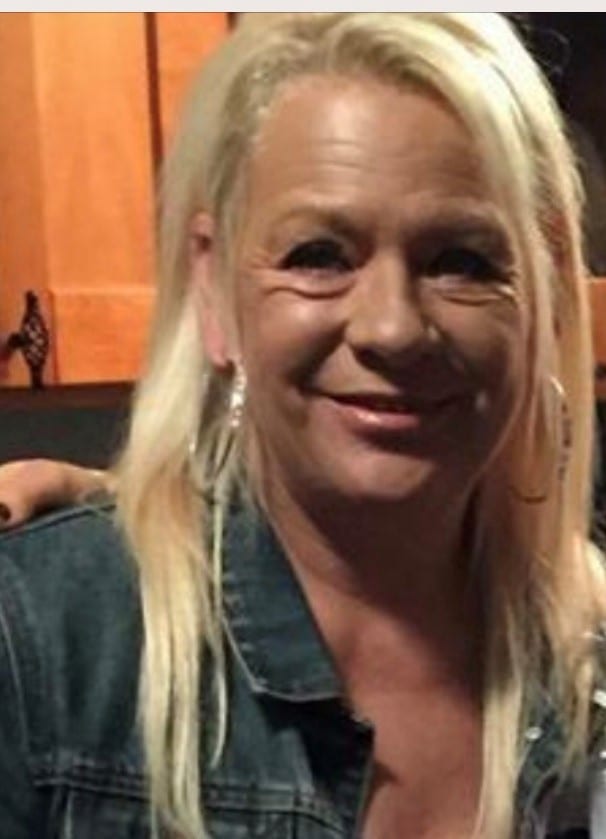
Fortunately, Missy didn’t give up and focused instead on learning how to rake and shovel asphalt and jackhammer a curb line. Despite her petite size, she proved her strength and was able to do “everything a laborer would do.” Six months after she started, she got her Commercial Driver License (CDL) and began driving trucks. Eventually, she moved into operating heavy equipment, which she did for eight years. While doing all this, she also raised two children as a single parent.
Coming up through the ranks gives Missy credibility with the team she oversees. “I have done every job of the people I supervise, she says. Over time, she’s proven herself.
“I’ve run a jackhammer. I know what I’m talking about and have a strong work ethic. There is no substitute for experience.”
Missy Paulus
Missy has worked in both concrete and asphalt over the years and says “my real love has always been asphalt paving. We can take a garbage road and make it beautiful again. There’s instant gratification in that work, and the neighborhood comes out and thanks you.” She helped repave Alki Ave SW and is proud that she was one of the first crew chiefs to run “truck and pup” because the paving distance was so far.” A “truck and pup,” for those unfamiliar with this term, is a standard dump truck pulling a dump trailer that is capable of self-unloading.
Missy has blazed a pioneering trail for woman at SDOT as the only woman equipment operator in paving and the only female paving crew chief. She’s found supportive mentors over the years and says she has never gotten discouraged; when she’s experienced setbacks, “I just try harder. If I get passed over, I don’t give up.”
She maintains her motivation despite the tough impacts of the pandemic. Though she’s down crew members, Missy still strives to meet paving goals and respond quickly to emergencies like the recent sinkhole on Admiral Way. Her crews have been working weekends and, she says, “we are Johnny’s-on-the-spot. Our first priority is emergencies, but we also have to keep in mind other scheduled projects. . . it’s been crazy but we’ve been making it happen.”
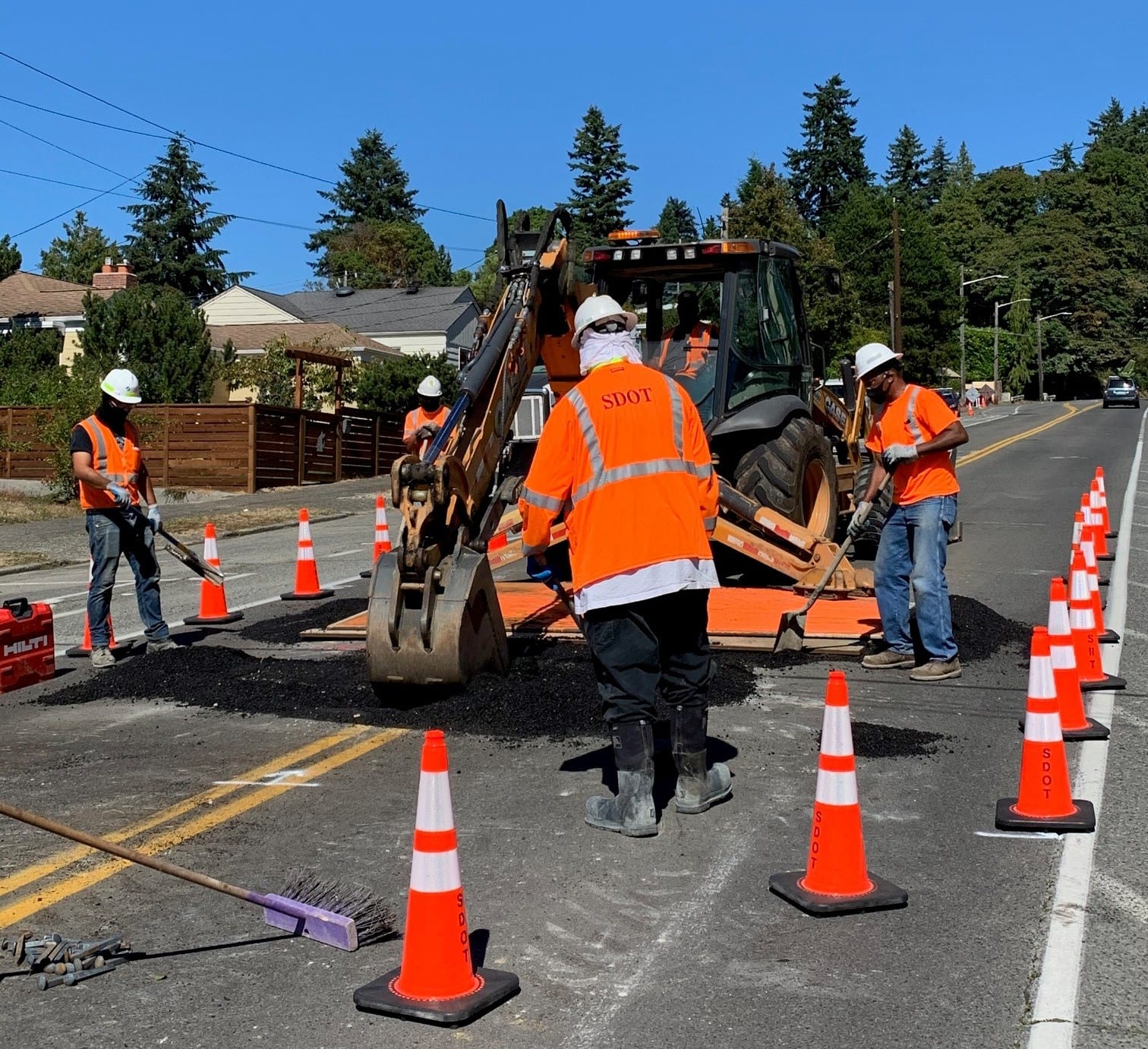
Missy brings Gatorade and ice to worksites for the teams on hot days and appreciates that her crews are keeping up their spirits and wearing their masks in accordance with the state guidelines. “I’ve had no issue with people not wanting to do that.”
Missy and her crews support each other and keep a sense of humor while doing their jobs day after day. Recognition from the public goes a long way, too. She says “We notice that people are grateful. Thank you’s really help.” She looks forward to the day when things will return to a more ordinary pace but for now, she’s happy to be learning and succeeding in her work.
These profiles represent just a few of the 1,000 or so women and men who work at SDOT, and Director Sam Zimbabwe truly appreciates all of them.
“I appreciate everyone’s hard work throughout the pandemic. The SDOT team displays pride, ingenuity, and resilience each and every day, and it shows through in the work we deliver for the people of Seattle.”
Sam Zimbabwe